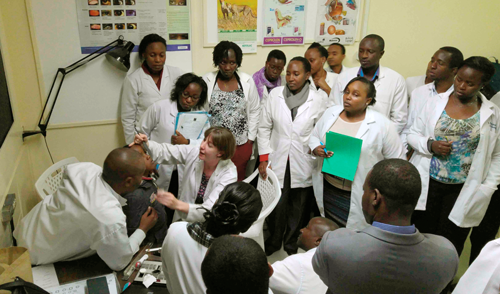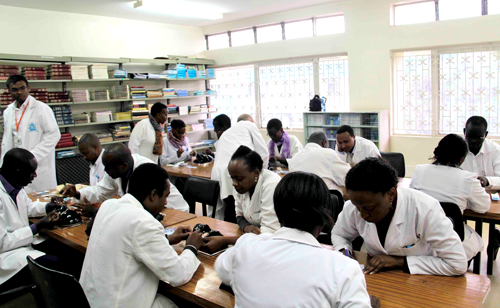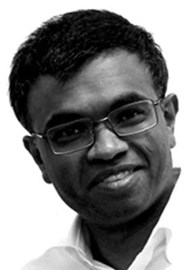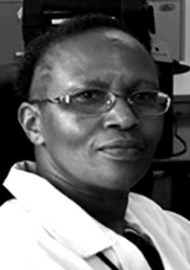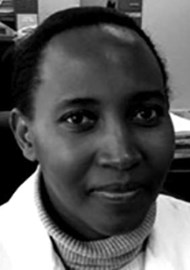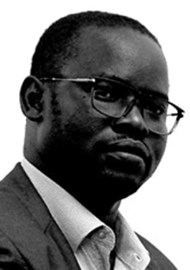One of the aims of the College of Ophthalmology of Eastern, Central and Southern Africa (COECSA) is to provide specialist ophthalmic training for practising ophthalmologists from its 11 member countries.
A number of initiatives are enabling more ophthalmologists to undertake subspecialist training, including a five-year programme of short- and long-term international fellowships funded by the Queen Elizabeth Diamond Jubilee Trust, in which over 100 African ophthalmologists have participated.
In order to enhance specialist skills, particularly for South Sudan, the Juba-Bournemouth VISION 2020 LINK has been offering week-long intensive ophthalmic specialist training for the last two years, in collaboration with the University of Nairobi, COECSA and the Royal College of Ophthalmologists. These courses are also open to ophthalmologists from the whole COECSA region and have taken place in Nairobi rather than in Juba, due to the current political climate. So far, this training has benefited ophthalmologists from Burundi, Congo, Ethiopia, Kenya, South Sudan, Swaziland, Tanzania, Uganda and Zimbabwe.
The overall aims of the training courses are:
a. To enhance the skills of ophthalmologists in treating and managing patients
b. To improve the quality of teaching and training in COECSA institutions through adapting and delivering part of the Royal College of Ophthalmologists’ Train the Trainers programme
c. To encourage informal networking and collaboration between ophthalmologists in institutions throughout the COECSA region.
In July 2018, a team from Bournemouth and Norwich joined consultant ophthalmologists at Kenyatta National Hospital and the University of Nairobi to deliver specialist training in paediatric ophthalmology to 16 delegates from six COECSA countries – Kenya, Tanzania, Uganda, Burundi, Ethiopia and South Sudan – together with 40 local trainee ophthalmology residents.
Aims of the paediatric ophthalmology course:
- To teach practical skills in the clinical assessment and examination of paediatric patients
- To improve skills in management decisions, particularly in the area of strabismus and amblyopia management
- To teach modern strabismus surgical techniques, including the anchored hang-back recession technique, through observation and simulation surgery
- To provide updates on clinical assessment and management of a broad range of paediatric ophthalmic conditions
- To improve teaching and training skills through the Train the Trainers course.
Course faculty, delegates and residents.
Course programme – lectures
The programme began each morning with an hour of interactive talks delivered by members of the UK and Nairobi team prior to clinical teaching. Essential skills including visual acuity measurement in children and the assessment of strabismus were described. The practical approach to the investigation and management of children with strabismus and / or reduced vision were introduced, including helpful algorithms.
In the last few years a survey of neonates in Kenyatta National Hospital found a high incidence of retinopathy of prematurity, which prompted the introduction of an effective screening and treatment service. It was highly instructive for the UK team to learn how this was being introduced to peripheral units in Kenya, often in resource-poor situations.
Kenyatta is a regional and international centre for retinoblastoma and achieves remarkable outcomes despite difficulties in obtaining chemotherapy drugs. Unfortunately, many children present late and efforts to improve patient education and streamline referral are continuing. As yet there is no universal screening of children for ocular disease in Kenya.
Similarly, initial surgical outcomes for paediatric cataract are excellent, but amblyopia management remains challenging. Parents are reluctant to attend for follow-up when their child has no obvious visual difficulty and they are often unable to afford eye patches or spectacles.
There was a practical talk on the causes, features, assessment, investigation and management of children with nystagmus, with many video examples.
Clinical teaching
The majority of the course consisted of clinical teaching in outpatients and theatre on specially selected patients. The ophthalmology resident doctors clerked the patients and presented them to the faculty and delegates. The majority of residents were using the Hirschberg corneal reflex test to measure angles of ocular deviation. Definitive orthoptic examination technique using prism cover test was demonstrated and there was ample opportunity for the delegates to practise on patients, with individual instruction.
As well as essential infantile strabismus, patients presented with a broad range of conditions including cranial nerve palsies, restrictive strabismus and midbrain syndromes. The clinical reasoning required for diagnosis and management decisions in these patients was discussed by the trainers. These decisions are complex and depend on practical as well as clinical considerations. As already mentioned, amblyopia currently has a poor prognosis in these settings, so strabismus surgery is often undertaken at an earlier stage.
The majority of the patients selected for the course required surgical intervention and delegates were able to observe and be instructed in the latest strabismus surgical techniques.
It became clear that the World Health Organization (WHO) checklist is yet to be adopted in many COECSA institutions. Simple changes in theatre practice were introduced, including the strict limit of one patient with one set of notes in the theatre area at one time. The clear benefits of summarising essential details for each patient on a whiteboard was highlighted. The WHO checklist as used in ophthalmology departments in the UK has been made available to delegates for use in their own units.
Clinical teaching with the course delegates.
Training the trainers
Over the past eight years, the Royal College of Ophthalmologists has been running a “Train the Trainers” (TTT) course with COECSA and developing leaders, who can now run the course independently, as well as course facilitators. The Teaching and Enhancing Learning modules were introduced as an addition to this year’s clinical teaching programme in Nairobi. One delegate had done the TTT course before and was able to help as a group facilitator, but otherwise none had received any formal teaching training since qualifying as ophthalmologists.
It was encouraging that delegates enjoyed the practical interactive nature of this course and found it very instructive. They now plan to develop more effective teaching and training in their own hospitals.
Simulation surgery
As well as observation of advanced strabismus surgery techniques, consultant delegates had the opportunity to practise these techniques in simulation surgery sessions.
Two different model eyes were used for simulation training. Firstly the advanced strabismus eye models mounted in anatomical heads from Simulated Ocular Surgery (SOS) (http://simulatedocularsurgery.com) were loaned from Bournemouth and Norwich ophthalmology departments for the course. However, there was insufficient funding to supply sufficient SOS model eyes for all the delegates and residents to receive training.
Fortunately, reusable low-budget model eyes developed by Mohsan Malik of Moorfields and Saurabh Jain of the Royal Free were also provided. The eyes are constructed using widely available materials. Validation of the model is due to be presented at the British & Irish Paediatric Ophthalmology and Strabismus Association (BIPOSA) meeting in late 2018.
Initially the consultant delegates were shown a step-by-step demonstration in the anchored hang-back recession and resection techniques. Then each had the opportunity to carry out simulation surgery using these techniques on the SOS models, with facilitators on hand to assist.
Later in the week, they taught the new techniques to trainee ophthalmologists on the budget model eyes using the teaching and practical skill techniques they had just learned on the TTT course. This reinforced their own learning as well as put their teaching skills into practice. The budget model eyes are realistic enough for the purpose and provide a practical solution for training in a resource-poor environment.
Collaboration
As a result of this course, a collaboration has been established between UK and COECSA Retinopathy of Prematurity screening groups, which we hope will benefit both in the establishment of screening in peripheral units. Informal networks have also been established between individual consultants to provide specialist support in the management of difficult clinical problems.
Course delegates undertaking simulation training.
Course feedback
Initial feedback received was very positive. Ninety-five percent overall thought all aspects of the course were good or excellent. Here are some delegate comments on what they liked about the course:
“It was simplified and very easy to understand. The tutors made it fun. Not too serious.”
“Learning and evaluation of orthoptics, I appreciated the teaching and simulation in general. Please organise more sessions if possible.”
[Simulation surgery training] “A great way to get hands-on experience. I’ve never performed strabismus surgery before.”
“The comprehensive teaching that wraps up paediatric ophthalmology as a package.”
Comments from delegates following the course
“Regarding the paediatric training, it really made an impact on my practice, especially assessment of squint children and children with poor vision. Henrietta is really an expert who simplified the paediatric strabismus assessment for us; we really appreciated her input. I am now able to carry out a routine assessment smoothly in our busy Buluk Eye Center in Juba, though we are lacking prisms and other paediatric clinic material.
Narman gave us a very simple, easy to do and yet advanced technique of squint surgery. Also the lecture that he gave us during the course was so excellent, it broadened and refreshed our paediatric ophthalmology knowledge.
Lastly, the TTT training was the practical, useful session because it gave me new techniques on how to teach my junior staff and students in the College of Medicine in Juba University.
May God bless you and all those who made the training happen.”
– Joseph Monday, Consultant Ophthalmologist, Juba, South Sudan.
Summary
Through the Juba-Bournemouth LINK team, in collaboration with the COECSA-RCOphth LINK and Kenyatta, this subspecialist training course has offered a great opportunity to learn together and demonstrate different techniques and training methods. Plans are underway for another subspecialty training course in 2019 in glaucoma and this will be offered again to ophthalmologists from all over the COECSA region, alongside the Juba LINK.

COMMENTS ARE WELCOME


